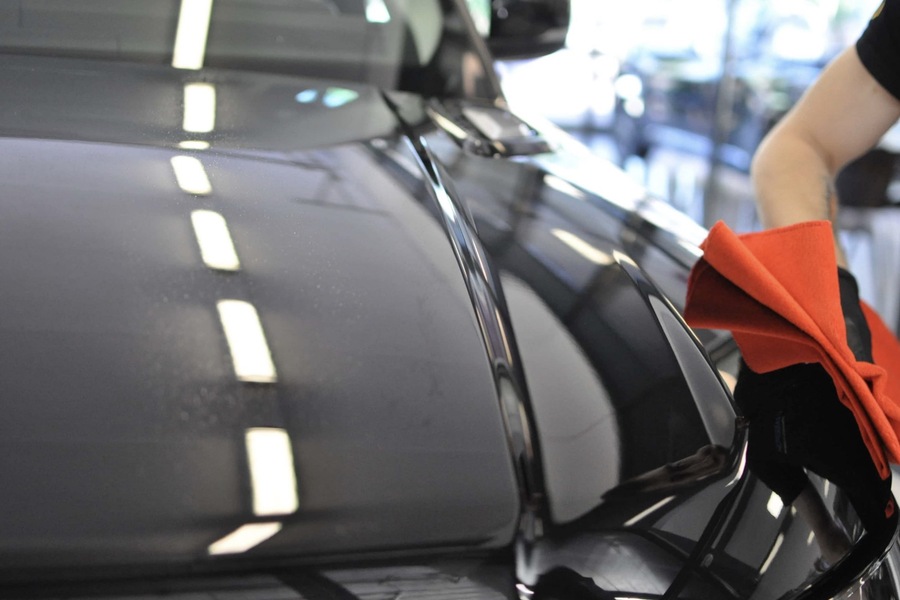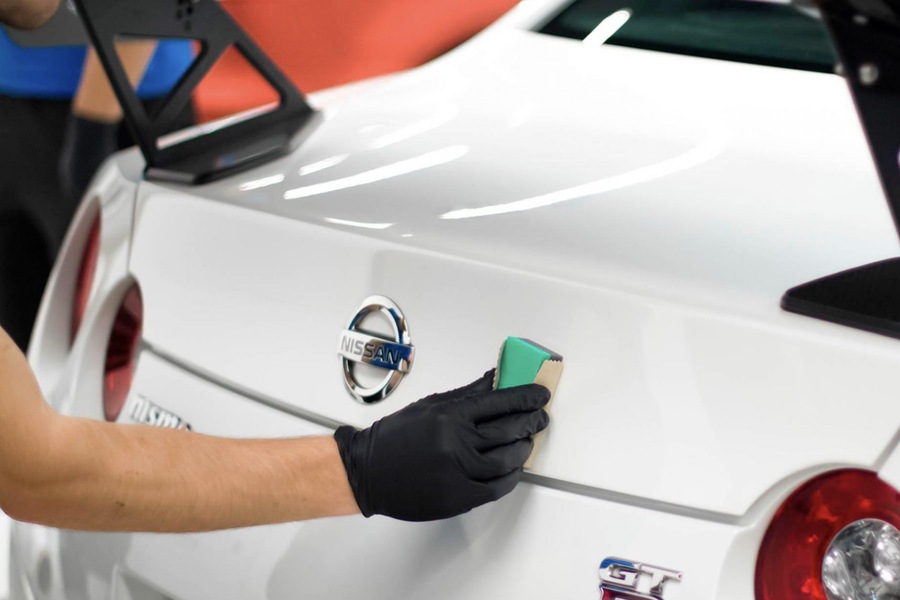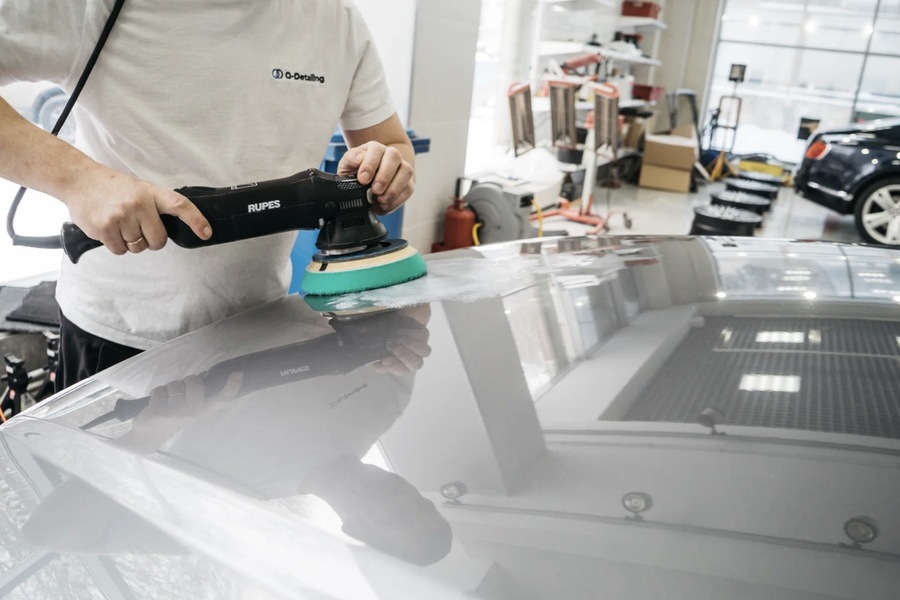Vehicle owners are always looking for ways to improve performance and efficiency. While engine upgrades and modifications are commonly considered, one often overlooked factor is the role of aerodynamics. Ceramic coatings, known for their paint protection properties, have gained attention for their contribution to enhancing a vehicle’s aerodynamic profile. This article delves into how ceramic coatings can influence aerodynamics, the science behind this effect, and why it matters for vehicle owners, especially in regions like Dubai and the UAE.
Understanding Aerodynamics: Why It Matters for Vehicle Efficiency
Aerodynamics refers to how air flows around a vehicle as it moves, directly impacting fuel efficiency, speed, and overall performance. The smoother the airflow, the less resistance (or drag) a vehicle encounters. Reducing drag allows a vehicle to move more effortlessly, resulting in better fuel economy and increased speed. In regions like Dubai and the UAE, where high-performance and luxury vehicles dominate the roads, optimizing aerodynamic efficiency is a priority for both drivers and manufacturers.
Surface Smoothness and Airflow: The Connection
The aerodynamic efficiency of a vehicle is influenced by its surface smoothness. A rough or uneven surface creates turbulence in the air flowing around it, increasing drag and energy consumption. This is where ceramic coatings come into play. These coatings are applied to create a hydrophobic, smooth surface that minimizes imperfections, reducing turbulence and allowing air to flow more seamlessly over the vehicle’s exterior. This smoother airflow not only enhances the vehicle’s speed but also contributes to overall energy efficiency.
Ceramic Coatings and Surface Tension: The Science Behind Smooth Finishes
Ceramic coatings consist of nano-ceramic particles that form a semi-permanent bond with the vehicle’s paint. When applied, these particles fill microscopic imperfections and create an even layer. This process results in reduced surface tension, minimizing the points of air resistance and drag. The reduction in surface tension enables air to glide smoothly over the coated surface, maintaining laminar airflow and reducing the chances of turbulent eddies forming around the vehicle.

Hydrophobic Properties and Their Role in Aerodynamics
One of the key characteristics of ceramic coatings is their hydrophobic nature. Hydrophobic surfaces repel water and contaminants, reducing the build-up of grime, dirt, and moisture that can disrupt airflow. In regions with diverse weather conditions, such as Dubai’s occasional rain and sandstorms, maintaining a clean surface is crucial for optimal aerodynamics. By keeping the vehicle cleaner for longer periods, ceramic coatings help ensure that airflow is not disrupted by accumulated dirt or moisture.
Quantifying the Impact: Statistics on Drag Reduction
Studies have shown that even small reductions in surface roughness can lead to measurable decreases in drag. According to the National Renewable Energy Laboratory (NREL), reducing drag by just 10% can improve fuel efficiency by up to 5%. While the impact of ceramic coatings on aerodynamics may vary based on the vehicle’s design and driving conditions, the smooth finish they provide can contribute to a slight but significant reduction in drag. This becomes especially valuable in high-speed scenarios where aerodynamic efficiency plays a critical role.
Application in High-Performance and Luxury Vehicles
High-performance and luxury vehicles are designed with aerodynamics in mind, featuring sleek shapes and low drag coefficients. Applying ceramic coatings to these vehicles further enhances their aerodynamic properties. The smooth surface provided by the coating complements the vehicle’s design, optimizing airflow and potentially increasing top speed and fuel efficiency. In the UAE, where luxury cars and sports vehicles are common, ceramic coatings are often sought not only for their protective benefits but also for their ability to improve performance metrics.
Benefits for Electric Vehicles: Extending Range and Efficiency
Electric vehicles (EVs) have distinct aerodynamic requirements due to their reliance on energy efficiency to maximize range. Ceramic coatings can play a role in reducing drag for EVs, which directly translates to extended battery range. With the UAE promoting the adoption of electric vehicles through initiatives such as the Dubai Green Mobility Strategy, optimizing EV performance has become a focus area for both car owners and manufacturers. Applying ceramic coatings to electric vehicles can thus contribute to the country’s broader sustainability goals by enhancing range efficiency.
Ceramic Coatings in the Context of Dubai’s Climate
Dubai’s unique climate presents challenges for maintaining vehicle surfaces. Intense UV exposure, high temperatures, and sandstorms can deteriorate paint and disrupt smooth surfaces, affecting aerodynamics. Ceramic coatings offer a solution by providing UV resistance and a durable, smooth layer that minimizes the impact of environmental factors on the vehicle’s exterior. This makes ceramic coatings particularly beneficial for vehicles in Dubai and the UAE, where maintaining the integrity of a vehicle’s surface is critical for performance and longevity.
Practical Considerations for Applying Ceramic Coatings in Dubai
The effectiveness of ceramic coatings depends on proper application. For best results, vehicles should be thoroughly cleaned and decontaminated before the coating is applied. Professional application services ensure that the coating bonds correctly, providing a long-lasting, smooth surface that enhances aerodynamics. Several specialized centers in Dubai offer ceramic paint protection services, catering to the needs of high-performance vehicle owners and enthusiasts.
Ceramic Coatings and Sustainable Mobility in the UAE
The UAE’s commitment to sustainable mobility is evident through various initiatives, including the establishment of electric charging stations and the promotion of hybrid and electric vehicles. Enhancing vehicle aerodynamics through ceramic coatings aligns with these sustainability goals by reducing energy consumption. Whether it’s for traditional internal combustion engines or electric vehicles, ceramic coatings contribute to a more sustainable driving experience by optimizing energy use and reducing emissions associated with fuel consumption.

Ceramic Paint Protection and Aerodynamic Efficiency
While ceramic coatings are primarily known for paint protection, their ability to enhance aerodynamic efficiency is an additional benefit worth considering. The smooth surface provided by ceramic coatings reduces drag, minimizes turbulence, and contributes to improved fuel efficiency and performance. This makes ceramic paint protection a valuable investment for vehicle owners looking to optimize their vehicle’s aerodynamic profile, especially in regions like Dubai where vehicle performance and aesthetics are highly valued.
Comparing Ceramic Coatings with Other Aerodynamic Enhancements
Ceramic coatings are not the only solution for improving a vehicle’s aerodynamics. Modifications such as spoilers, diffusers, and body kits can also influence airflow. However, these modifications often alter the vehicle’s design and may not always be practical for daily driving. Ceramic coatings, on the other hand, provide a non-intrusive, aesthetic-friendly way to enhance aerodynamics without altering the vehicle’s design. This makes them a suitable choice for vehicle owners who want to improve performance without compromising on visual appeal.
The Future of Ceramic Coatings: Beyond Paint Protection
The future of ceramic coatings may extend beyond traditional paint protection applications. Research and development in nano-coating technologies are paving the way for advanced coatings that can influence not only aerodynamics but also thermal properties and energy efficiency. As these technologies evolve, ceramic coatings may become an integral part of vehicle design, contributing to more streamlined, efficient, and environmentally-friendly automobiles.
Conclusion
Ceramic coatings, while traditionally applied for paint protection, have a significant role in enhancing a vehicle’s aerodynamic profile. By creating a smooth surface that reduces drag, maintaining a hydrophobic finish that minimizes dirt accumulation, and providing durability in harsh climates like Dubai, ceramic coatings contribute to improved vehicle efficiency and performance. Whether for high-performance cars, luxury vehicles, or electric vehicles, ceramic coatings offer a unique blend of protective and aerodynamic benefits, making them a valuable addition for any vehicle owner in the UAE.
